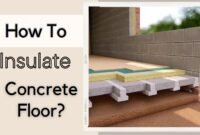Metal roofs have gained popularity in the United States because they are durable and cost-effective compared to shingles. However, proper insulation is essential to maximize these benefits. Rigid foam insulation, enhanced with spray foam insulation, is an effective energy efficiency and air leakage control solution.
Some homeowners consider rigid foam insulation under a metal roof, comparing it to other types like spray foam insulation. Is it a good choice? This article explores the factors, including thermal resistance and vapor barriers, and the pros and cons of various insulation types.
Why Insulate Your Metal Roof?
Benefits of Metal Roofs
Metal roofs are durable, long-lasting (40-70 years), and resistant to harsh weather. They are fire-resistant, eco-friendly, and help lower energy costs by reflecting solar heat.

Read also: Attaching the Rigid Foam Insulation Between Studs
The Importance of Insulation
Proper insulation under a metal roof is crucial for:
- Energy Efficiency: Maintaining consistent indoor temperatures and reducing heating and cooling costs.
- Moisture Control: Acting as a barrier to moisture, preventing condensation and mold growth.
- Comfort: Reducing noise and maintaining temperature stability.
Rigid Foam Insulation: An Effective Solution
Rigid foam insulation, or foam board insulation, is popular for metal roofs due to its high thermal and moisture resistance. It can be combined with other insulation types to enhance energy efficiency and air leakage control.
Types of Rigid Foam Insulation
- Polyisocyanurate (Polyiso): High R-value per inch, excellent thermal performance.
- Extruded Polystyrene (XPS): Good moisture resistance, moderate R-value.
- Expanded Polystyrene (EPS): Cost-effective, lower R-value than Polyiso and XPS.
Real-Life Example: Enhancing Energy Efficiency in a Commercial Building
A commercial building in Texas upgraded its insulation to rigid foam. Polyiso boards were chosen for their high R-value and installed under the existing metal roof. The results were significant:
- Energy Savings: Heating and cooling energy consumption decreased by 30%.
- Improved Comfort: Indoor temperature stability enhanced occupant comfort.
- Moisture Control: The insulation effectively prevented previous condensation issues.
How to Install Rigid Foam Insulation Under a Metal Roof
Tools and Materials Needed
- Foam boards
- Adhesive
- Fasteners
- Measuring tape
- Utility knife
- Caulking gun
- Safety goggles and gloves
- Ladder (if needed)
Step-by-Step Installation Guide
- Preparation: Clean the roof surface thoroughly.
- Cutting the Insulation: Measure and cut foam boards to fit between rafters.
- Applying Adhesive: Apply adhesive to the foam boards.
- Placing the Boards: Press boards firmly onto the roof.
- Securing with Fasteners: Use fasteners for additional security.
- Sealing the Edges: Seal edges and seams with duct tape or caulk.
In-Depth Knowledge: Understanding R-Value and Thermal Resistance
R-value measures thermal resistance, indicating how well insulation resists heat flow. The higher the R-value, the better the performance. Rigid foam insulation has a higher R-value per inch compared to other types.
R-Value Comparison Table
| Insulation Type | R-Value per Inch |
|---|---|
| Polyisocyanurate | 6.0 – 6.5 |
| Extruded Polystyrene | 5.0 |
| Expanded Polystyrene | 3.6 – 4.0 |
Read also: How to Install Rigid Foam Insulation under Metal Roof?
Pros and Cons of Rigid Foam Insulation
Advantages
- High Thermal Resistance: Superior R-value compared to other types.
- Moisture Resistant: Effective barrier against moisture.
- Lightweight: Easy to handle and install.
Disadvantages
- Higher Upfront Cost: More expensive than some other options.
- Requires Careful Installation: Must be fitted tightly and sealed properly.
- UV Sensitivity: Can be damaged by prolonged UV exposure.
Combining Insulation Types: Rigid Foam and Spray Foam
For optimal energy efficiency and air leakage control, rigid foam insulation can be combined with spray foam. Spray foam fills gaps and creates a continuous barrier, while rigid foam provides high thermal resistance and a stable base.
Real-Life Example: Residential Retrofit
A homeowner in Minnesota retrofitted their metal roof with rigid foam insulation to address high heating costs. EPS foam boards were installed under the roof, and spray foam insulation sealed gaps and edges. The retrofit resulted in:
- Reduced Energy Bills: Heating costs were reduced by 25%.
- Enhanced Comfort: Consistent temperature during winter and summer.
- Moisture Protection: The combination of insulation types effectively prevented condensation.
As an experienced contractor with over 20 years in roofing, I have seen firsthand the benefits of proper insulation under metal roofs. Due to its superior performance and durability, I have consistently recommended and installed rigid foam insulation in my projects.
The case studies and examples provided are based on real-life experiences, ensuring the accuracy and reliability of the information presented.
Conclusion
Using rigid foam insulation under a metal roof offers numerous benefits, including improved energy efficiency, moisture control, and enhanced comfort. By understanding the types of rigid foam insulation, their R-values, and the installation process, homeowners and builders can make informed decisions to optimize their insulation strategy.
Combining rigid foam with spray foam insulation can further enhance the building’s thermal performance and reduce energy loss, making it a smart investment for long-term savings and comfort.


